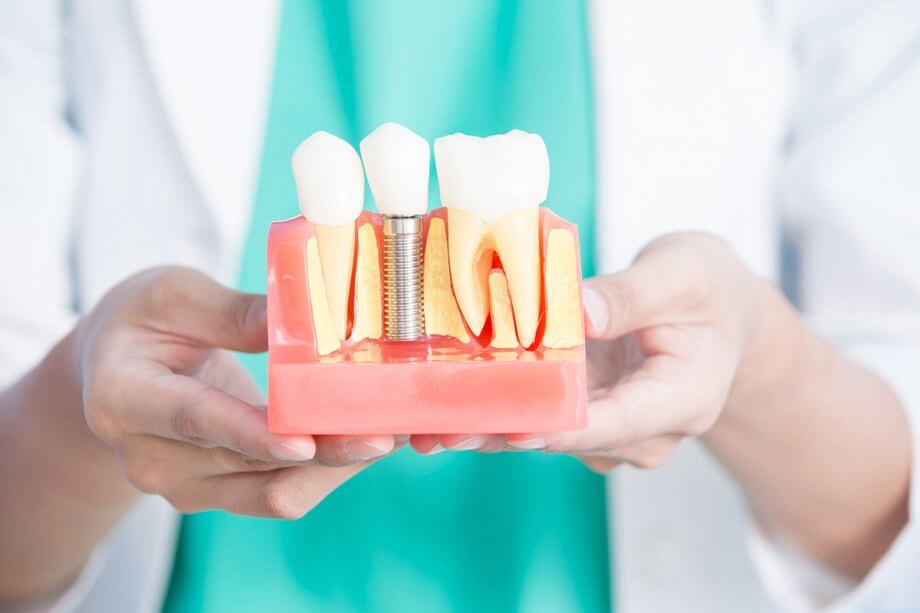Dental implants have become the preferred solution for missing teeth because they’re the only option that prevents bone loss in the jaw. Many of our patients are anxious about the process of getting dental implants, but our team is happy to help you understand the procedure. While the thought of getting dental implants may make you nervous, we will ensure that you are relaxed and comfortable throughout the procedure—and you can have confidence knowing that our patients are thrilled with their new smiles!
Here's a step-by-step guide to what happens when you get dental implants.
1. The Initial Exam and Imaging
We'll make sure you're a good candidate for dental implants and discuss your treatment goals during your initial consultation. While some dentists take x-rays during this exam, we use an advanced cone beam scanner, which gives us three-dimensional imagery and a full 360-degree view of your teeth, all while emitting less radiation than traditional x-rays. This enables us to create the best treatment plan for your needs and produce an accurate model of your teeth and jaw.
2. Tooth Extraction
If dental implants are being used to replace teeth that are too damaged for other restorative procedures, the next step is to extract these teeth. Because the extraction does not usually take place at the same time as the implant placement, you will have time to heal in between the two surgeries.
4. Bone Grafting
Bone grafting may be required prior to dental implant surgery in some cases. The jaw must have adequate bone density to support implants in order for them to be placed successfully. If we see in our CBCT scan that your jawbone doesn’t have sufficient support for dental implants, we'll place natural or synthetic bone grafts to promote new bone growth; this may take several months to complete, but it’s critical for preventing dental implant failure.
5. Dental Implant Placement
The implant fixture that replaces the root of your tooth is inserted into the jawbone during your dental implant placement procedure. We'll make a small incision in the gum tissue to expose your upper or lower jawbone, then place the implant. Rest assured that the area will be completely numbed, and we can provide sedation to help you feel calm and relaxed, if necessary. The majority of patients are surprised by how little discomfort they experience throughout the procedure. The gums are sutured once the implant is placed.
6. Osseointegration
The jawbone and implant undergo osseointegration, which is the process in which they fuse together to form a stable base of support for a restoration. This can take months to complete, but it is important not to rush the process because it’s crucial for the success of your dental implants.
7. Abutment Placement
The abutment is a small piece that attaches your replacement tooth to your implant. The abutment placement is sometimes done at the same time as the dental implant surgery, although it is more often performed as a separate procedure.
8. Restoration Attachment
Next, your replacement teeth will be attached to your dental implants. If you’re replacing a single tooth, a crown will be used to restore it. When multiple teeth are being replaced by dental implants, you may need multiple crowns, a bridge, a partial denture, or a full denture.
Prior to this step, we’ll take impressions and create a model of your smile to ensure that your replacement teeth look and function like your natural teeth.
9. Maintenance
You'll need to brush twice a day for two minutes and floss at least once a day, just like you would with your natural teeth. Maintain your dental health by visiting us for check-ups and dental cleanings every six months, or more frequently if necessary, to ensure that your dental implants last a lifetime.
Learn More About Dental Implants
Are dental implants right for you? Contact us today at 212-888-4140 to schedule an appointment for a consultation.

